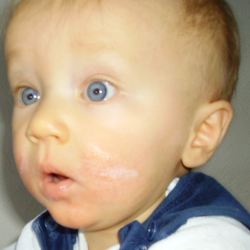
I must confess, I do not frequently read articles in dermatology journals, but this one, Evaluating Industry Payments Among Dermatology Clinical Practice Guidelines Authors, caught my eye and it needs to be shared. Financial conflicts of interest (COI) are of increasing concern and the response of medical leadership, authors and publishers is disclosure. The importance of this article is that sheds sunlight on how much do we adhere to our self-imposed standards.
Here is a synopsis of their findings.
- Between 2013 and 2016 the American Academy of Dermatology (AAD) published three sets of clinical guidelines – standards of care developed by expert consensus. [1]
- The guidelines covered common dermatologic concerns, atopic dermatitis [2], office-based surgery and acne.
- AAD guidelines for workgroups include the requirement that at least 51% of the workgroups developing clinical guidelines have no financial conflicts of interest; that the workgroup chair must be “free of relevant conflicts of interest for at least one year after guideline publication.”
- Of the fifty authors, forty received varying amounts of payments from “industry’ – pharmaceutical companies. The payments included speaking fees, honoraria, food and travel, and funding for research. The median was $33,247.
- The pharmaceutical companies making the payments with only one exception, all had products that used in therapy for the medical conditions under consideration.
- For the atopic dermatitis guidelines, they were able to look at industry support before and after publication. In this instance, the authors of the guidelines saw a 473% increase in the year after guideline publication and an additional 97% increase in the second year. [3]
- 36-52% of the time the authors either did not indicate a conflict of interest or only reported a portion of this income.
- 70% of the authors had received payments as compared to the 51% guideline.
- The co-chairs of the atopic dermatitis guidelines received more than $50,000 in industry payments in the year after the guidelines were published.
Experts in medical care are frequently involved with industry. Their expertise is prized by companies as they provide guidance in developing new products and help in getting "the word out" to other physicians. In turn, the experts’ experience with new cutting-edge technologies from these companies, helps maintain their reputation as experts among physicians. Expertise and industry are intertwined.
Did these authors take money from industry that biased their thinking? I do not know and the research cannot answer the question. At the very least, the optics are bad. It appears that rules designed to reduce bias, rules developed by the AAD – not imposed by some external agency are largely being ignored. Do we really believe they are the only medical specialty with this problem? The authors suggest that Societies more carefully monitor disclosures of COI and enforce the rules they develop. I couldn’t agree more.
[1] Publication of guidelines is a very common activity for all of our professional associations. It helps reduce variation in our treatment. Each society uses their leaders, experts in the field to develop the guidelines.
[2] Atopic dermatitis – is an inflammation of the skin (the itis in dermatitis) that causing itching, redness, local swelling and cracked skin. It affects about 20% of the population at one time or another.
[3] Cumulative payments for these authors went from $221,293 to $2,502,444 between 2013 and 2015.
